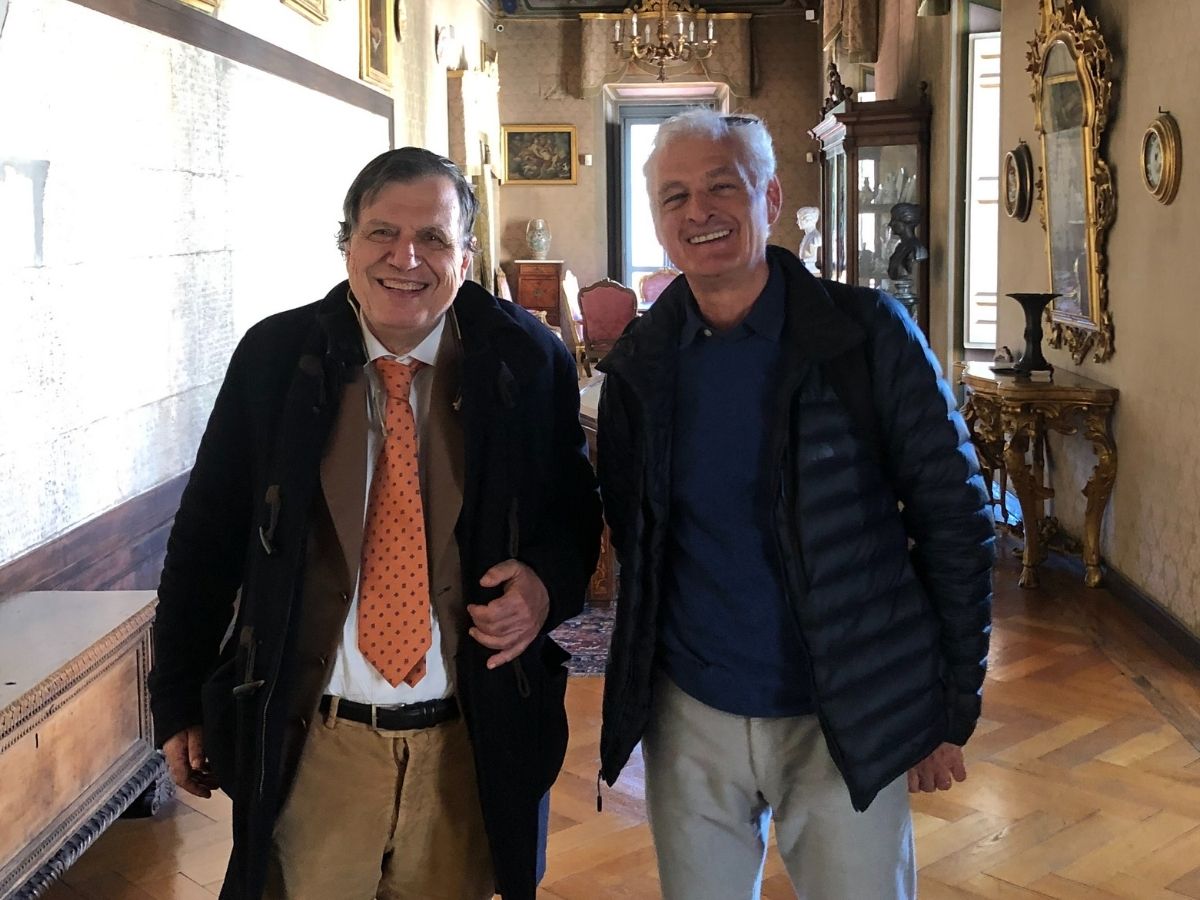An account by Sauro Succi.
Many IIT researchers have highlighted the significance of the 2021 Nobel Prize for Physics awarded to Giorgio Parisi, 73-year-old Italian theoretical physicist, full professor of Theoretical Physics at the Sapienza University in Rome, research associate at INFN (Istituto Nazionale di Fisica Nucleare, National Institute of Nuclear Physics), President of the Accademia dei Lincei from 2018 to 2021, and now Vice-President and President of the Class of Physical, Mathematical and Natural Sciences. On his Twitter channel, Liberato Manna wrote “I can’t find the words to express my joy! Another great reason to promote science and research in Italy much further than is currently done!”; Alberto Diaspro summed up his enthusiasm with “Immenso Giorgio Parisi” (Giorgio Parisi, immense). The Scientific Director Giorgio Metta also sent the winner a congratulations message (see OpenTalk magazine.) While the news spread through national and international newspapers, amidst surprise, satisfaction and emotion, we were able to talk to Sauro Succi, Principal Investigator at IIT and Visiting Professor at Harvard University, pioneer and international expert of one of the computational methods for the study of complex systems – the ‘Lattice Boltzmann’ method widely used throughout the world – by phone in order to obtain an account of Parisi’s work in clear and simple language.
Sauro, you have known Giorgio Parisi for a long time, what does the award of this prize mean?
Not only do I have great esteem for Giorgio Parisi, but also great affection, and I am truly happy about this result. It is an important prize, not only because it was won by an Italian, but also because he is a researcher who has never left Italy. Other Italian Nobel Laureates had chosen to work in other countries. Parisi has built up a school and has nurtured generations of outstanding students, many of whom are now successful abroad while several are still in Italy. From this point of view, the prize has a special value for Italian science and for our country in general.
The 2021 Nobel Prize for Physics was awarded to Parisi, along with Syukuri Manabe and Klaus Hasselmann, for significant discoveries in the exploration of complex physical systems, such as atomic behaviour in materials or the physics of the earth’s climate. During the acclamation, Parisi’s work on spin glass, a magnetic model of glass representing a specific complex system, was mentioned. Can you explain this model?
Spin glass is a model for glass, which is an amorphous substance whose state of matter is not yet fully understood, as it is midway between solid and liquid states. Glass looks like a solid to us, but when observed at the molecular level it resembles a liquid. Parisi described the so-called frustration mechanisms of glass, in other words the constraints to which the structure of glass is subject and which cannot all be satisfied at the same time. This is why the term ‘frustration’ is used, in a way analogous to when you can’t do something in life because of certain impediments. Parisi’s work demonstrates the importance of these frustration mechanisms for glass. In the spin glass model, constraints are applied to the orientation of the spins that underlie the behaviour of magnetic materials; spins are like little tops that are oriented up or down depending on the external magnetic field. The interaction of these spinning tops generates a frustration mechanism, because some tops prefer to be in the same state as others nearby – up when their neighbour is up and down when their neighbour is down – while others prefer having the opposite state with respect to their neighbour. In the first case the tops cooperate and in the second they compete, and it is this coexistence that makes the configuration messy and complex. It is like seating people at a table when some of them like each other’s company, while others hate each other: figuring out the ideal arrangement when there are many guests can be a real puzzle!
So in this case the complex system is a disordered system, and it is searching for an optimal configuration from an energetic point of view?
We can imagine the energy of these disordered systems as a saucepan with some protuberances. If we put a ball into the pot, instead of reaching the bottom of the pot immediately – the minimum energy position (simple behaviour) – the ball could stop on one of the bumps. This means that there are many minimum energy states in the glass that compete with each other and this results in fluctuations in the relaxation of the glass structure. This can become extremely complex and slow, precisely because of this competition.
Where, in the natural, physical world, can we find similar systems that take a while to ‘relax’, so to speak?
The importance of spin glass is that it is a model that can be applied to a whole category of disordered systems that take a long time to relax. For example, proteins. Proteins that have just been made by cells are a linear sequence of amino acids. To become useful, the protein has to take on its curled-up form, and curling up is a very complex relaxation process.
Parisi’s work was the formulation of a mathematical model that could depict these phenomena, which the Nobel Committee itself described as a ‘complicated landscape’. This model can be applied to different contexts, from neuroscience to laser construction. So in a way, theoretical physics is applied to practical problems?
The power of theoretical models is precisely that of being able to identify characteristics shared by apparently different phenomena; for example, proteins and glass. The challenge is to combine the universal nature of theoretical models with the specific characteristics of practical problems. For example, in the case of spin glass, we can apply this sort of model to problems of stochastic optimisation, such as deciding the optimal position of a chip’s various components, considering all the constraints of its construction.
Parisi’s contribution to theoretical physics goes beyond the spin glass model. Can you tell us about the most important parts of his work, in your opinion?
I think that Giorgio is unique in the world for the depth and impact of his work. He has made at least four or five achievements, each of which could be worth a Nobel Prize. Here I would like to mention just a few examples. In the field of high energy, in the 1970s Parisi, with Guido Altarelli, published a model describing the statistics of quarks inside neutrons and protons, a model used by experimental physicists to validate discoveries such as the identification of the Higgs boson. Another important part of his work is the Kardar-Parisi-Zhang model, a mathematical model that describes how surfaces grow. Originating from the study of crystal growth, the model makes it possible to predict whether a surface will be more or less wrinkled, according to its growth. In the field of climate studies, he was co-author, with Benzi, Sutera and Vulpiani, of a very important and all-Italian work, on stochastic resonance, with applications in the analysis of climate change.
In the history of Italian physics there are many names of scientists who should have received the Nobel Prize, such as Giuseppe Occhialini, Nicola Cabibbo, Giovanni Jona-Lasinio, Luciano Maiani and more recently, in chemistry, Vincenzo Balzani. What does this prize for Giorgio Parisi tell us?
It shows that if Italians are able to work as a team around truly meritorious individuals, important goals that would otherwise be unattainable can be achieved. The country should support its talents, with its scientific community and in other ways. It should be visible to all that the country is aware of its own points of excellence and that it is doing everything possible to nurture and cultivate them. We would all benefit from this, and I think that we are learning to operate in this way. The Prize awarded to Giorgio Parisi gives dignity and prestige to the work of all Italians, whether they are scientists or not.





